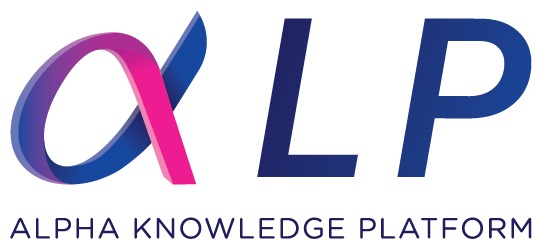TickerTape
Weekly Global Stablecoin & CBDC Update

This Week's Stories
Federal Reserve Governor Stephen Miran delivered a speech at the BCVC Summit 2025 at the Harvard Club of New York City, arguing that widespread stablecoin adoption could substantially lower the U.S. neutral rate (r*), the policy rate that neither stimulates nor restricts economic growth. Miran emphasized that the Federal Reserve staff projects stablecoin uptake reaching between $1 trillion and $3 trillion by the end of the decade. He highlighted that dollar-pegged stablecoins are increasing demand for U.S. Treasury bills and other dollar-denominated liquid assets, particularly from foreign buyers. This additional demand for Treasury securities would lower borrowing costs but also put persistent downward pressure on the neutral interest rate, potentially requiring the Fed to maintain lower policy rates to avoid inadvertently slowing the economy. Miran framed stablecoins as potentially becoming a “multitrillion dollar elephant in the room” for central bankers globally.
Key Takeaways:
- Stablecoin growth projections ($1-3 trillion by 2030) could lower the neutral rate by pushing up demand for Treasury securities and other dollar assets
- Lower neutral rates would force the Fed to maintain lower policy rates than otherwise needed to support economic growth
- Stablecoins strengthen dollar dominance globally by providing easier access to dollar-denominated assets for international savers
- The GENIUS Act regulatory framework legitimizes stablecoins and ensures they are backed by safe, liquid U.S. dollar assets
- Potential 40 basis points of downward pressure on interest rates could result from widespread stablecoin adoption, comparable to one-third of the previous “global saving glut” impact
Why It Matters:
- Monetary Policy Implications: Central banks must now factor stablecoin adoption into forward-looking monetary policy decisions, potentially requiring different policy responses than in previous decades
- Global Capital Flows: Stablecoins are reshaping international demand for dollar assets, with foreign users as the primary growth driver, affecting the U.S. current account deficit and Treasury yields
- Financial Infrastructure: Miran argues U.S. financial infrastructure could benefit from stablecoin integration, potentially revolutionizing how dollars are held and transferred domestically and internationally
- Zero Lower Bound Risk: If stablecoins persistently lower the neutral rate, the Federal Reserve faces increased risk of hitting the zero lower bound during recessions, limiting its ability to stimulate the economy
- Dollar Dominance: The innovation reinforces U.S. dollar supremacy as the world’s preferred currency while potentially affecting currency stability in emerging markets
India officially recognized cryptocurrency as a legal property asset on November 9, 2025, representing a significant policy shift from the government’s previous positions on digital currencies. The legal designation brings cryptocurrencies within existing property law frameworks while maintaining restrictions on their use as payment instruments. The classification acknowledges crypto’s role in wealth accumulation and inheritance while distinguishing it from stablecoins and CBDCs, which remain subject to separate regulatory oversight. This development provides legal clarity for Indian crypto holders while the RBI continues promoting the digital rupee as the preferred digital currency option.
Key Takeaways:
- India recognizes cryptocurrency as legal property asset for inheritance and wealth purposes
- Classification distinguishes crypto from payment instruments and CBDCs in regulatory framework
- Legal designation provides certainty for crypto asset holders while maintaining payment use restrictions
- Development reflects pragmatic acceptance of crypto as wealth asset despite RBI’s digital rupee preference
Why It Matters:
- Represents major policy shift in India’s traditionally restrictive approach to cryptocurrencies
- Provides legal framework for crypto inheritance and wealth management in India
- Could influence other countries’ approaches to crypto property classification
- Validates pragmatic distinction between crypto as assets versus payment instruments
On November 10, 2025, the Bank of England published a comprehensive consultation paper outlining its proposed regulatory regime for sterling-denominated systemic stablecoins. The framework permits stablecoin issuers to hold up to 60% of backing assets in short-term UK government debt, with the remaining 40% held in unremunerated Bank of England accounts. For newly transitioning systemic issuers, initial backing may consist of up to 95% in short-term debt to support early viability. The Bank proposes temporary holding limits of £20,000 per coin for individuals and £10 million for businesses, with exemptions for large enterprises. Additionally, the BoE is considering central bank liquidity arrangements to backstop systemic stablecoin issuers during market stress. The consultation runs until February 10, 2026, with finalized rules expected in H2 2026.
Key Takeaways:
- Backing asset requirements: Up to 60% in short-term UK government debt; 40% in BoE unremunerated accounts
- Temporary holding limits: £20,000 per individual per coin; £10 million for businesses (subject to exemptions)
- Central bank liquidity backstop: BoE considering emergency arrangements to support systemic stablecoin issuers during stress
- Dual regulatory oversight: BoE regulates systemic stablecoins; FCA regulates non-systemic stablecoins and broader cryptoassets
- Consultation timeline: Public feedback until February 10, 2026; finalized rules expected H2 2026
Why It Matters:
- Provides regulatory clarity: Clear framework reduces uncertainty for stablecoin issuers and attracts institutional participation in the UK market
- Protects financial stability: Holding limits and BoE backing requirements mitigate risks to commercial banking and credit availability during transition period
- Balances innovation with safety: Allows stablecoin infrastructure development while maintaining safeguards against potential systemic risks
- Competitive positioning: UK establishes distinct regulatory pathway that could attract or repel international stablecoin platforms depending on business model alignment
- Central bank preparedness: BoE liquidity arrangements signal institutional readiness for widespread stablecoin adoption and market stress scenarios
Project Tamga, spearheaded by the BIS Innovation Hub Hong Kong Centre, explores validating regulatory proofs (licenses, attestations, and similar documents) across jurisdictions using pre-existing internet infrastructure like DNS and HTTPS. Instead of new platforms, Tamga embeds trust metadata in standardized web paths, allowing direct verification from issuer domains. The solution aims to automate compliance checks and supervision in real-time, improving efficiency and interoperability for global financial institutions, while guarding confidentiality and sovereignty. Ultimately, Tamga advances machine-readable trust without centralized databases or blockchain dependencies.
Key Takeaways:
- Enables cross-border verification of regulatory proofs, overcoming jurisdictional silos
- Utilizes existing internet standards (DNS, HTTPS) rather than new systems
- Trust metadata, such as cryptographic keys, discoverable via issuer’s website
- Real-time, automated validation embedded in digital workflows
- Maintains regulatory confidentiality and sovereignty
- Does not rely on centralized blockchain or registry solutions
Why It Matters:
- Cuts manual, jurisdiction-bound verification, streamlining global compliance
- Future-proofs supervisory processes as financial systems become more interconnected
- Supports instant, automated risk checks for institutions
- Reduces infrastructure costs using established global standards
- Potentially reshapes RegTech and SupTech for governments and the private sector
The UAE achieved a major milestone, completing its first government transaction using the Digital Dirham, the nation’s central bank digital currency. The Ministry of Finance and Dubai Department of Finance executed the transaction via the mBridge platform in less than two minutes. This pilot transaction represents the integration of the Digital Dirham into national financial operations and comes as part of the Central Bank of the UAE’s Financial Infrastructure Transformation (FIT) Programme. The transaction was overseen by Sheikh Maktoum bin Mohammed bin Rashid Al Maktoum, First Deputy Ruler of Dubai, and signifies the UAE’s progress toward a comprehensive digital economy where the Digital Dirham will eventually be used for both government and private sector transactions.
Key Takeaways:
- First government Digital Dirham transaction completed in under 2 minutes via mBridge platform
- Executed by Ministry of Finance and Dubai Department of Finance (DOF) on November 10, 2025
- Part of Central Bank of the UAE’s Financial Infrastructure Transformation (FIT) Programme pilot phase
- Demonstrates operational readiness for broader Digital Dirham deployment in government and private sectors
- Reinforces UAE’s position as a global financial innovation hub with demonstrated CBDC capability
Why It Matters:
- Validates CBDC operational feasibility: Demonstrates that digital currencies can function efficiently in real-world government transactions, reducing settlement times from days to seconds
- Accelerates financial inclusion: Digital Dirham enables faster, more transparent government payments and strengthens the UAE’s integrated digital economy
- Strengthens cross-border connectivity: mBridge participation positions the UAE within a multi-central bank digital currency system, facilitating international settlements
- Advances financial transparency: Government use of Digital Dirham establishes audit trails and operational efficiency benchmarks for private sector adoption
- Global precedent-setting: As one of the first CBDCs to complete tangible government transactions, the UAE demonstrates regulatory clarity and institutional commitment to digital currencies
Coinbase announced on November 11, 2025, that it has ended acquisition discussions with UK-based fintech BVNK following a mutual agreement to terminate negotiations. The deal, valued at approximately $2 billion, had advanced to the due diligence stage with an exclusivity agreement entered in October, preventing BVNK from entertaining other offers. Coinbase provided minimal detail, stating that both parties “mutually agreed” to walk away without disclosing specific reasons for the termination. BVNK, which facilitates stablecoin payments and cross-border transfers using digital currencies like USDC and Tether, remains one of the most valuable private fintech firms in the cryptocurrency sector.
Key Takeaways:
- Deal termination: Coinbase and BVNK mutually ended $2B acquisition talks after reaching due diligence stage
- Timing: Exclusivity agreement was signed in October 2025; termination announced November 11, 2025
- BVNK valuation: Approximately $2 billion, positioning it as a major stablecoin infrastructure player
- Competing acquisitions: Mastercard is in parallel discussions to acquire Zerohash for $1.5-2 billion for similar stablecoin infrastructure capabilities
- Market context: Modern Treasury acquired stablecoin startup Beam for ~$40 million in October 2025, showing continued M&A activity
Why It Matters:
- Signals stablecoin M&A caution: Major crypto firms exercising due diligence discipline despite sector enthusiasm and significant valuations
- Regulatory uncertainty: Potential underlying concerns about stablecoin regulatory frameworks may have contributed to withdrawal, especially given recent Bank of England and global regulatory developments
- Competitive dynamics: Mastercard’s parallel Zerohash negotiations indicate traditional payments incumbents are moving aggressively into stablecoin infrastructure as crypto-native firms reassess
- Valuation questions: $2B price for BVNK may have been challenged during detailed financial and regulatory review, suggesting market corrections possible
- Strategic pivot: Coinbase may redirect $2B capital allocation toward other acquisition targets or organic stablecoin/payment infrastructure development
The BIS publishes “Competing Digital Monies,” comparing bank deposits, platform-issued digital tokens, and CBDCs as they vie for a role in retail payments. The theoretical analysis uses two-sided market economics to show that public infrastructure (fast payment systems or CBDCs) is key for interoperability, greater financial inclusion, and improved welfare. While both solutions diminish exclusion, they also engender disintermediation, where incumbent payment intermediaries lose ground to newer players. Ultimately, retail CBDCs and advanced fast payment systems have nearly equivalent effects, so countries with strong systems shouldn’t expect radical change from a retail CBDC. The findings guide future regulatory, technical, and policy strategies
Key Takeaways:
- Retail payments now feature bank deposits, platform tokens, and CBDCs as contenders.
- Interoperable public payment systems or CBDCs can eliminate financial exclusion.
- “Walled garden” payment networks lead to inefficiently low trade volumes and access.
- Both fast payment systems and CBDCs may disintermediate incumbent banks.
- The public solutions foster competition and financial inclusion, but may change fee structures for merchants.
Why It Matters:
- Reframes payment system design for policymakers and regulators.
- Offers insight into big tech and fintech’s growing role in consumer payments.
- Highlights trade-offs between financial inclusion, competitive dynamics, and market structure.
- Informs jurisdictions about the similar benefits of fast payment systems versus CBDCs.
- Explains how digital transformation can upend traditional retail banking dominance.
Mastercard has partnered with Thunes to bring stablecoin wallet payouts to the mainstream, offering banks, payment providers, and end-users enhanced choice and flexibility in global money movement. Revealed at the Singapore Fintech Festival, Mastercard Move will now enable near real-time payouts to stablecoin wallets via Thunes’ Direct Global Network, utilizing regulated stablecoins’ speed and 24/7 liquidity. This move expands Mastercard’s payout endpoints, which already include cards, bank accounts, and cash. The collaboration addresses rising demand for instant, 24/7 digital currency payouts, promoting financial inclusion, especially in underserved markets. By integrating Thunes’ Pay-to-Stablecoin-Wallets solution, Mastercard is positioning itself at the forefront of digital currency adoption for global payments, supporting both individuals and businesses with a faster, more inclusive set of options.
Key Takeaways
- Mastercard and Thunes are pioneering stablecoin payouts for global money transfers.
- Mastercard Move now enables near real-time payouts to stablecoin wallets using Thunes’ network.
- The solution offers banks and payment providers new payout options, expanding corridor access and flexibility.
- Stablecoin payouts facilitate 24/7 availability, speed, and liquidity.
- The partnership aims to increase financial inclusion and reduce barriers, particularly for underserved markets.
- Marks major validation of the use of regulated stablecoins for real-world payments.
Why It Matters
- Accelerates mainstream adoption of digital currencies in cross-border payments.
- Empowers banks and payment providers to serve a broader range of customers.
- Facilitates instant, secure, and flexible payment options globally.
- Reinforces Mastercard’s leadership as a bridge between traditional finance and the digital asset economy.
- Supports broader financial inclusion and the democratization of economic participation.
JPMorgan Chase has officially launched JPM Coin, a deposit token designed for institutional clients, enabling near-instant payments via the Base blockchain, affiliated with Coinbase. Unlike traditional payment rails that operate only during business hours, JPM Coin facilitates 24/7 transfers of US dollar deposits held at the bank, significantly reducing transaction times. The launch comes after successful trials involving major companies such as Mastercard and Coinbase. JPMorgan plans to extend the service to third-party clients and expand to other currencies, pending regulatory approval. Notably, deposit tokens like JPM Coin differ from stablecoins, providing holders with the ability to earn yield and making them attractive for institutions reliant on large balances. The move signals a broader industry shift, with major financial institutions exploring digital asset solutions to modernize and accelerate financial transactions.
Key Takeaways:
- JPMorgan Chase launched JPM Coin, a deposit token for institutional clients, enabling instant fund transfers 24/7 via the Base blockchain.
- JPM Coin represents US dollar deposits held at the bank and was piloted with industry leaders including Mastercard and Coinbase.
- The bank plans to expand JPM Coin to other currencies and third-party clients, pending regulatory approval.
- Deposit tokens differ from stablecoins, notably by offering yield to holders, making them attractive for institutions with large balances.
- JPM Coin is accepted as collateral on Coinbase, highlighting its integration into broader digital financial ecosystems.
Why It Matters:
- Accelerates Payments: Enables real-time, 24/7 settlement for institutional clients, reducing operational bottlenecks.
- Yield-Bearing Feature: Unlike most stablecoins, deposit tokens allow holders to earn interest, incentivizing institutional adoption.
- Regulatory and Industry Momentum: The launch follows broader industry experimentation and recent regulatory clarity (US Genius Act), pushing the boundaries of digital assets in banking.
- Wider Interoperability: Integration with external platforms like Coinbase signals increasing maturity and utility of blockchain-based financial products.
- Potential for Expansion: JPMorgan’s plans to add more currencies and networks could spur broader adoption and infrastructure modernization across the financial sector.
Circle Internet Group, Inc. (NYSE: CRCL) reported exceptional financial performance for Q3 2025, marking robust growth across key metrics. USDC in circulation soared to $73.7 billion, up 108% from the previous year, while total revenue and reserve income reached $740 million, a 66% increase year-over-year. Net income surged to $214 million, reflecting a remarkable 202% rise from the same period last year. The firm’s adjusted EBITDA registered $166 million, up 78%. Expanding partnerships, including Brex, Deutsche Börse Group, and Visa, and the launch of the Arc public testnet with over 100 participating companies underscore Circle’s increasing influence in digital assets and payments infrastructure. The company continues its drive toward building an open, programmable financial ecosystem, positioning USDC and its infrastructure as foundational to the future of global finance.
Key Takeaways:
- USDC in circulation reached $73.7 billion, 108% annual growth
- Total revenue and reserve income grew 66% to $740 million
- Net income increased 202% to $214 million
- Adjusted EBITDA up 78%, at $166 million
- Arc public testnet launched, over 100 companies participating
- Circle Payments Network expanded to 8 countries, 29 institutions onboarded
- Strategic partnerships include Brex, Deutsche Börse Group, Visa, and more
- Updated guidance for FY2025: higher revenue and operating expenses expected
Why It Matters:
- Demonstrates growing adoption of digital dollar stablecoins, key for blockchain-based finance
- Partnerships bridge traditional finance, payments, and digital asset infrastructure
- Launch of Arc and exploration of a native token signal Circle’s push toward ecosystem innovation and programmability
- Financial resilience builds trust with investors and users, supporting Circle’s goal of establishing USDC as foundational to global payments and capital markets
- Regulatory risks and market competition remain, but Circle’s proactive growth strategy positions it as a frontrunner in the fast-evolving digital currency landscape
The Hong Kong Monetary Authority (HKMA) has launched EnsembleTX, signaling the pilot phase of Project Ensemble and a new milestone for tokenised finance in the region. Building on the earlier Ensemble Sandbox initiative, this phase allows real-value transactions with tokenised deposits and digital assets in a controlled environment. The pilot, involving major banks and industry leaders, will initially focus on enabling the settlement of tokenised money market fund transactions and enhancing real-time liquidity and treasury management. EnsembleTX will utilize the HKD Real Time Gross Settlement system, with plans to support 24/7 settlement in tokenised Central Bank Money. In collaboration with the Securities and Futures Commission (SFC), the HKMA aims to drive innovation across asset classes and reinforce Hong Kong’s status as a digital finance trailblazer. Industry stakeholders are invited to contribute use cases as the city accelerates the development of its tokenisation ecosystem.
Key Takeaways:
- HKMA launches EnsembleTX, moving Project Ensemble into its pilot phase for real-value tokenised transactions.
- The initiative allows participating banks and industry players to settle tokenised deposits and digital assets in a controlled pilot environment.
- Early use cases focus on tokenised money market fund transactions and real-time liquidity/treasury management.
- EnsembleTX will initially settle via HKD RTGS, with future upgrades targeting 24/7 settlement in tokenised Central Bank Money.
- The pilot will run through 2026 and is supported by the Securities and Futures Commission.
- HKMA calls on stakeholders to contribute use cases to further develop Hong Kong’s tokenisation ecosystem.
Why It Matters:
- Demonstrates Hong Kong’s leadership in advancing tokenisation and digital finance infrastructure.
- Facilitates faster, more transparent, and efficient settlement of digital asset transactions.
- Provides a practical framework for integrating tokenised money and assets into mainstream finance.
- Sets the stage for broader adoption of tokenisation across asset classes.
- Signals increased regulatory and institutional collaboration between the HKMA and SFC to foster financial innovation.
The Monetary Authority of Singapore (MAS) announced the completion of a live trial for wholesale central bank digital currency settlement and revealed plans to draft comprehensive stablecoin legislation. The CBDC trial, conducted with DBS, OCBC, and UOB, successfully settled interbank overnight lending transactions on the Singapore Dollar Test Network (SGD Testnet), marking the first live issuance of Singapore dollar wholesale CBDC. MAS Managing Director Chia Der Jiun stated the central bank plans to issue tokenized bills settled with wholesale CBDC in 2026. Simultaneously, MAS is preparing draft legislation for a stablecoin regulatory regime, emphasizing sound reserve backing and redemption reliability to ensure financial stability.
Key Takeaways:
- Completed live trial of wholesale CBDC for interbank overnight lending with three major Singapore banks
- SGD Testnet enables three critical functionalities: common settlement asset, programmability, and atomic settlement of both cash and securities
- Future tokenized MAS bills will be settled using Singapore dollar wholesale CBDC in 2026
- Draft stablecoin regulatory regime prioritizes sound reserve backing and redemption reliability
- MAS views wholesale CBDC as anchor for system where private regulated stablecoins serve different market needs
- Demonstrates practical operationalization of CBDC infrastructure beyond pilot phases
Why It Matters:
- Represents world-leading practical advancement in wholesale CBDC implementation with real-world interbank transactions
- Establishes Singapore as regulatory leader in integrating blockchain-based settlement with traditional banking infrastructure
- Forward-looking stablecoin framework ensures complementary regulation for private digital currencies alongside government CBDC
- Tokenized bills settlement reduces settlement risk and eliminates market fragmentation in wholesale markets
- Signals confidence in programmable digital money for conditional payment automation and atomic settlement
- Positions Singapore as fintech hub for institutional digital asset adoption and innovation
BNY Mellon announced the launch of the BNY Dreyfus Stablecoin Reserves Fund (BSRXX), a government money market fund specifically designed to provide compliant reserve vehicles for U.S. dollar stablecoin issuers operating under the GENIUS Act framework. The fund holds cash-equivalent reserves with maturities of 93 days or less, meeting federal regulatory requirements for stablecoin backing assets. Anchorage Digital made the fund’s initial investment, demonstrating strong institutional support. BNY projects the global stablecoin market will reach $1.5 trillion by end of decade, with the fund providing essential infrastructure for scaling compliant stablecoin issuance alongside BNY’s existing digital asset services.
Key Takeaways:
- BSRXX provides regulated vehicle for stablecoin reserves meeting GENIUS Act requirements enacted July 2025
- Fund holds ultra-safe, highly liquid assets (short-term Treasuries, repos) with 93-day maturity maximum
- Open to qualified institutional investors in custodial, brokerage, and fiduciary roles
- Builds on BNY’s existing digital asset expertise managing $57.8 trillion in assets under custody and administration
- Stablecoin market projected to grow from current $300 billion to $1.5 trillion by 2030
- Anchorage Digital’s initial investment signals strong institutional confidence in regulatory-compliant stablecoin infrastructure
Why It Matters:
- Addresses critical infrastructure gap enabling compliant stablecoin issuance at scale under new U.S. regulatory framework
- Provides stablecoin issuers plug-and-play solution for meeting mandatory reserve requirements, reducing operational complexity
- Demonstrates major traditional financial institution’s commitment to bridging traditional finance and blockchain-based digital assets
- Timing launch before GENIUS Act full rollout positions BNY as preferred partner for institutional stablecoin ecosystem
- Validates regulatory confidence in stablecoins as legitimate payment instruments worthy of banking-grade infrastructure
- Supports broader vision of 24/7 payment environment leveraging blockchain technology with traditional financial safeguards
The Federal Reserve announced that its FedNow instant payment network increased its transaction limit from $1 million to $10 million, effective November 2025. The tenfold increase enables corporate treasury, payroll, vendor payments, and real estate transactions to utilize instant payment infrastructure, expanding adoption beyond consumer and small business use cases. This enhancement positions FedNow as viable alternative to traditional wire transfers and ACH for high-value institutional transactions, supporting 24/7 real-time settlement with full fund accessibility.
Key Takeaways:
- Transaction limit increased tenfold from $1 million to $10 million, enabling institutional-grade payments
- Supports high-value use cases: corporate treasury management, payroll, vendor payments, real estate closings
- Provides always-on alternative to traditional wires and ACH for corporate liquidity management and settlement
- Enables financial institutions to expand treasury offerings with real-time liquidity dashboards and disbursement services
- Reduces reliance on slower payment rails for time-sensitive, large-value transactions requiring immediate settlement
- Requires enhanced operational safeguards including fraud controls, behavioral biometrics, and advanced risk scoring
Why It Matters:
- Democratizes instant payments across commercial banking, enabling corporations of all sizes access to real-time settlement
- Positions domestic U.S. instant payments infrastructure alongside global SWIFT alternative capabilities
- Reduces costs and complexity for corporate treasury operations by enabling instant cross-subsidiary fund transfers
- Creates competitive pressure on traditional payment methods, driving efficiency improvements in broader payments ecosystem
- Supports financial institutions in developing premium revenue models around instant payment services for corporate clients
- Signals Federal Reserve commitment to modernizing U.S. payments infrastructure for 24/7 digital economy needs
This IMF Fintech Note finds that retail central bank digital currencies (CBDCs) can enhance competition in concentrated payment markets. By introducing new platforms and payment methods, CBDCs may help lower costs, improve service quality, and increase financial inclusion, especially where private providers dominate and regulation is limited. Design levers shape real impact.
Key Takeaways:
- CBDCs add both a payment method and platform, challenging dominant private providers.
- Their impact is strongest in unregulated or highly concentrated payment markets.
- CBDCs promote lower fees, greater access, and contestability for new entrants.
- Design features (pricing, interoperability, ecosystem participation) are critical for effectiveness.
- In markets with strong public payment infrastructure, CBDC impact may be modest.
Why It Matters:
- CBDCs can curb excessive market power and price-setting by incumbents.
- Increased competition benefits merchants and consumers through cost reductions and innovation.
- Financial inclusion may advance, especially among unbanked populations.
- Policymaker choices in CBDC design determine competition gains and possible downsides.
This IMF Fintech Note explores how payment resilience is critical for economies affected by fragility and conflict. The report identifies layered strategies: redundancy, decentralization, user access, cybersecurity, and regulatory agility, drawing on case studies from Ukraine, Sudan, Haiti, Gaza, and Tuvalu. Lessons provide guidance on leveraging CBDCs to ensure reliable payments and financial stability amid crises.
Key Takeaways:
- Payment resilience underpins stability in fragile and conflict-affected states.
- Five core practices: redundancy, decentralized infrastructure, user access, cyber/operational security, and regulatory agility.
- Real-world strategies include multisite operations, satellite connectivity, digital literacy campaigns, and flexible regulatory frameworks.
- Stablecoins and CBDCs offer potential, but require careful design and trust in public institutions.
- Case studies show value of contingency planning and rapid adaptation.
Why It Matters:
- Ensures essential payment flows for individuals, businesses, and humanitarian actors during crises.
- Mitigates risks of infrastructure failure, cyberattacks, and institutional fragmentation.
- Offers resilience pathways for national authorities to sustain financial and social stability.
- Guides central banks on structuring CBDCs to enhance crisis response and future-proof digital payment systems.
This IMF Fintech Note reviews the implications of introducing retail CBDCs for domestic financial stability. The report identifies both risks and potential benefits, emphasizing transmission channels like bank funding, profitability, run risks, and payment system resilience. It concludes that risks can be mitigated with careful CBDC design, especially under moderate adoption scenarios.
Key Takeaways:
- CBDC may affect banks’ funding structures, competitiveness, and profitability.
- Six main transmission channels are identified: liability, asset, fee income, run-risk, information, and payment system resilience.
- Most studies find financial stability risks limited if CBDC adoption is mild.
- Risk mitigation tools include quantity limits or fees for large CBDC balances.
- Careful data analysis and modeling are essential for country-specific risk assessment.
Why It Matters:
- Highlights how CBDC could reshape the financial sector and affect financial stability.
- Warns that poor CBDC design could heighten bank run or instability risks.
- Emphasizes the need for tailored policy and data-driven modeling in CBDC rollouts.
- Informs policymakers of both opportunities and hazards as CBDC projects advance.
The IMF’s November 2025 Fintech Note provides policymakers with a detailed roadmap on the legal considerations for central bank digital currencies (CBDCs). Focusing on retail (rCBDC) and wholesale (wCBDC) models, it examines core issues: legal status, issuance mandates, platform regulation, technological links, and specific functionalities, guiding global approaches to robust, risk-mitigated CBDC deployment.
Key Takeaways:
- rCBDC should be defined as a central bank liability, protected from intermediary insolvency.
- Legal status as currency requires monopoly of issuance, legal tender recognition, and criminal law protection.
- Clear statutory mandates are vital for CBDC issuance and platform operation, often requiring legal reform.
- Platform operations, regulation of intermediaries, and system governance must align with Principles for Financial Market Infrastructures (PFMI).
- Legal frameworks must address programmability, holding/transaction limits, fee caps, interest, and offline use.
Why It Matters:
- CBDC design and deployment depend on robust legal certainty to ensure monetary and financial stability.
- Explicit statutory authority reduces legal, financial, and reputational risk for central banks.
- Properly managed platform and intermediary structures are critical to user protection, payment resilience, and public trust.
- Modernized legal frameworks enable innovation while ensuring compliance, risk mitigation, and alignment with core public policy objectives.
Powered by






